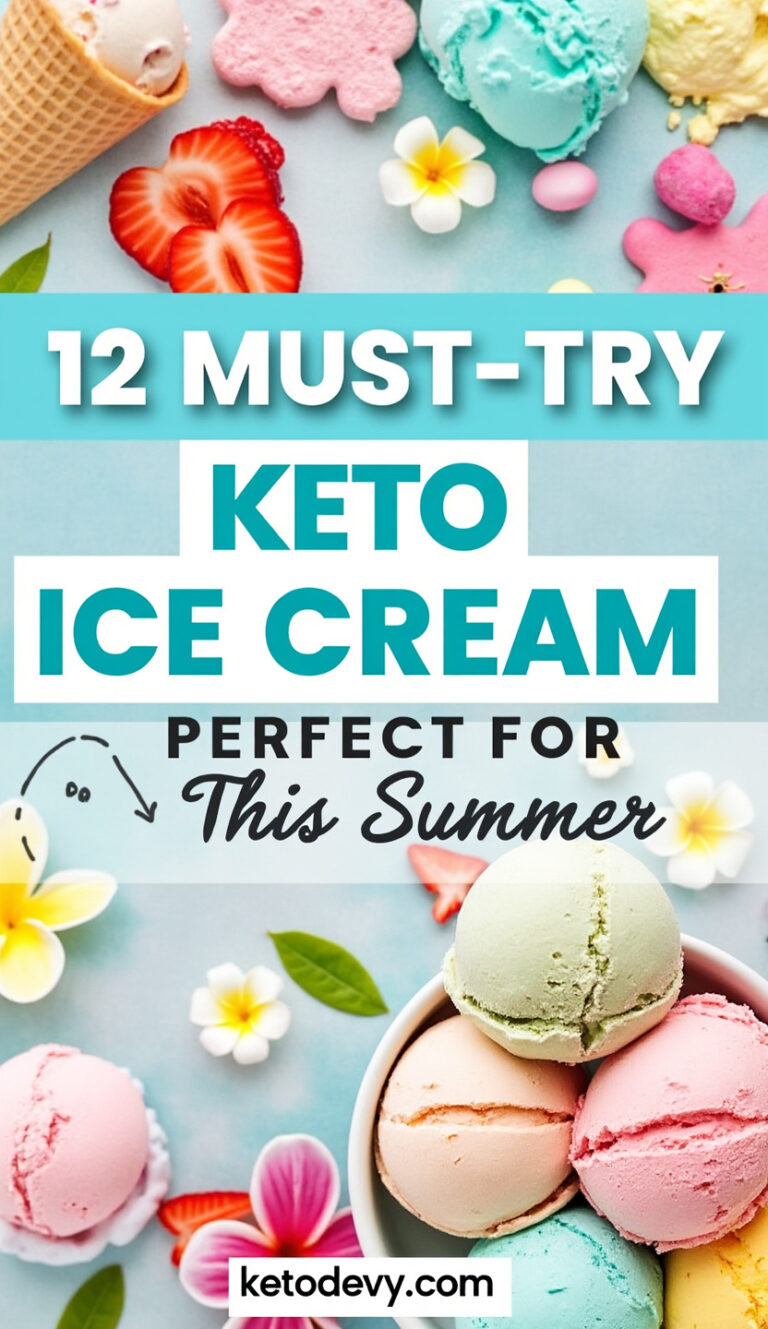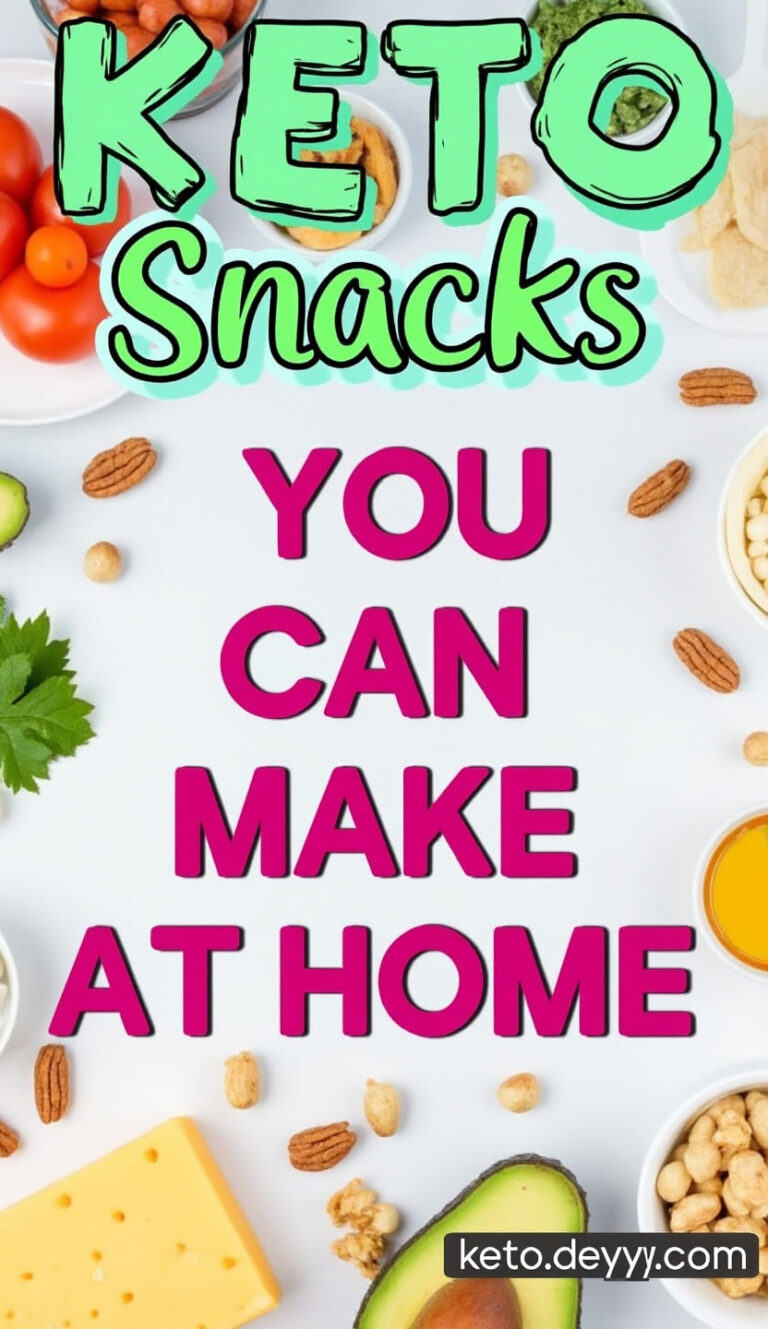Keto Sweeteners: Your Guide
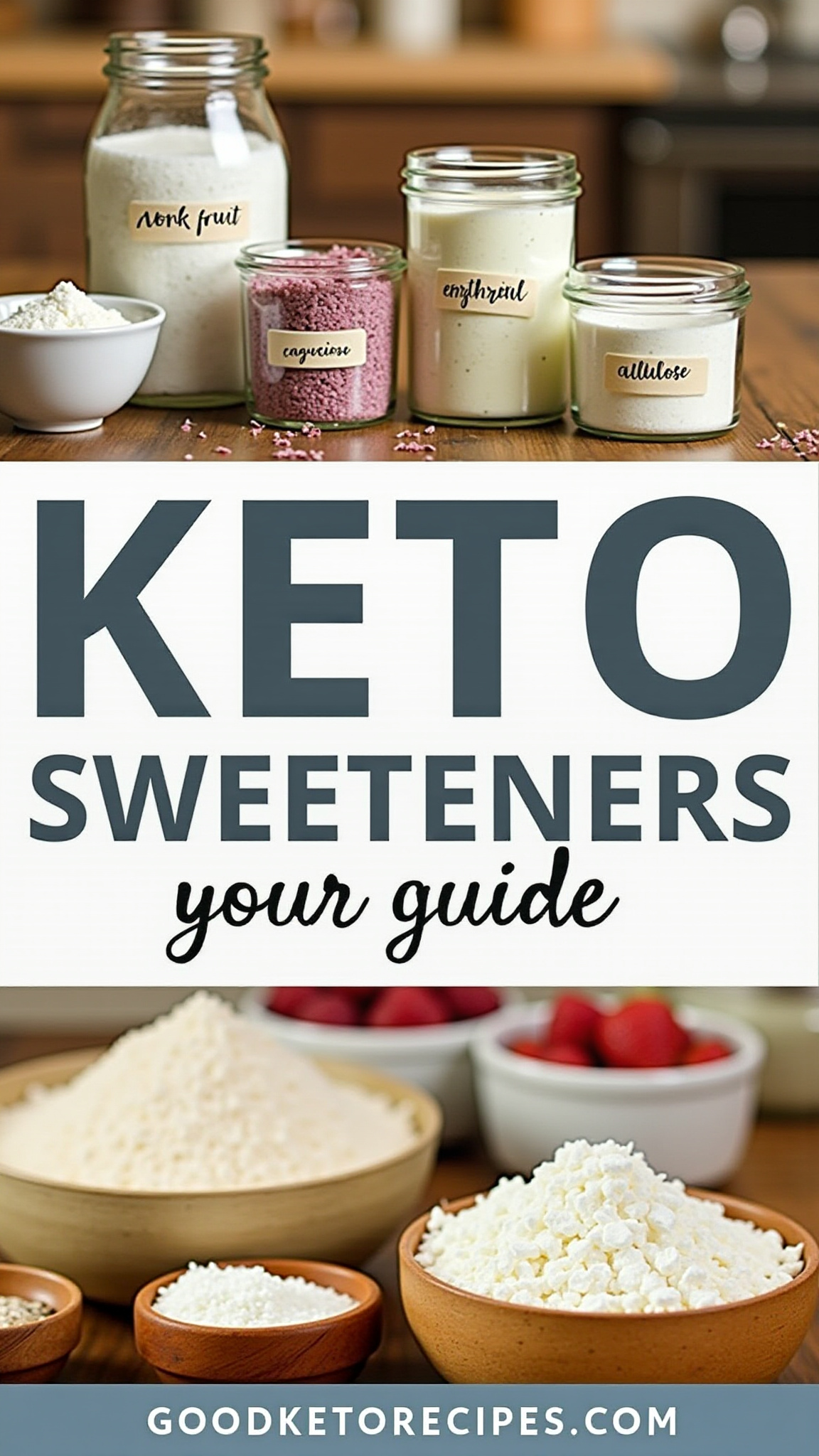
Navigating the ketogenic diet can be tricky, especially when it comes to satisfying your sweet tooth. Sugar is a definite no-go, but luckily, many sugar substitutes fit perfectly into a keto lifestyle. This comprehensive guide dives deep into the best keto-friendly sweeteners, helping you make informed choices without compromising your diet.
The Importance of Avoiding Sugar
The ketogenic diet relies on drastically reducing carbohydrate intake to force the body into ketosis, a metabolic state where it burns fat for fuel instead of glucose. Consuming sugar, a simple carbohydrate, spikes blood glucose levels, preventing ketosis and derailing your progress.

Understanding Keto-Friendly Sweeteners
A keto-friendly sweetener ideally possesses these characteristics:
- Zero or Minimal Net Carbs: Net carbs are calculated by subtracting fiber and sugar alcohols from total carbohydrates.
- Minimal Impact on Blood Sugar: The sweetener should not cause a significant rise in blood glucose or insulin levels.
- No Hidden Sugars or Carbs: Avoid sweeteners blended with dextrose, maltodextrin, or other sugars.
- Good Taste: While subjective, palatability is crucial for long-term adherence.
- No Negative Side Effects: Some sweeteners can cause digestive issues in certain individuals.
Exploring the Top Keto-Friendly Sweeteners
Here’s a detailed look at the best sugar substitutes for the keto diet:
1. Stevia

- Source: Derived from the Stevia rebaudiana plant.
- Net Carbs: Zero
- Glycemic Index: 0
- Taste Profile: Intensely sweet with a slightly bitter aftertaste for some.
- Pros:
- Naturally derived.
- Readily available in various forms (powder, liquid, granulated).
- Doesn’t raise blood sugar.
- Heat stable, making it suitable for baking.
- Cons:
- The aftertaste is a common complaint.
- Can be expensive.
- Some brands contain additives like dextrose (check labels carefully).
- Usage Tips: Start with small amounts due to its intense sweetness. Experiment with different brands to find one you like.
- E-E-A-T: Stevia has been used for centuries in South America, demonstrating experience. Numerous studies confirm its safety and lack of impact on blood sugar, establishing authoritativeness and trustworthiness. Its popularity among health-conscious consumers reflects expertise in sugar alternatives.
2. Erythritol
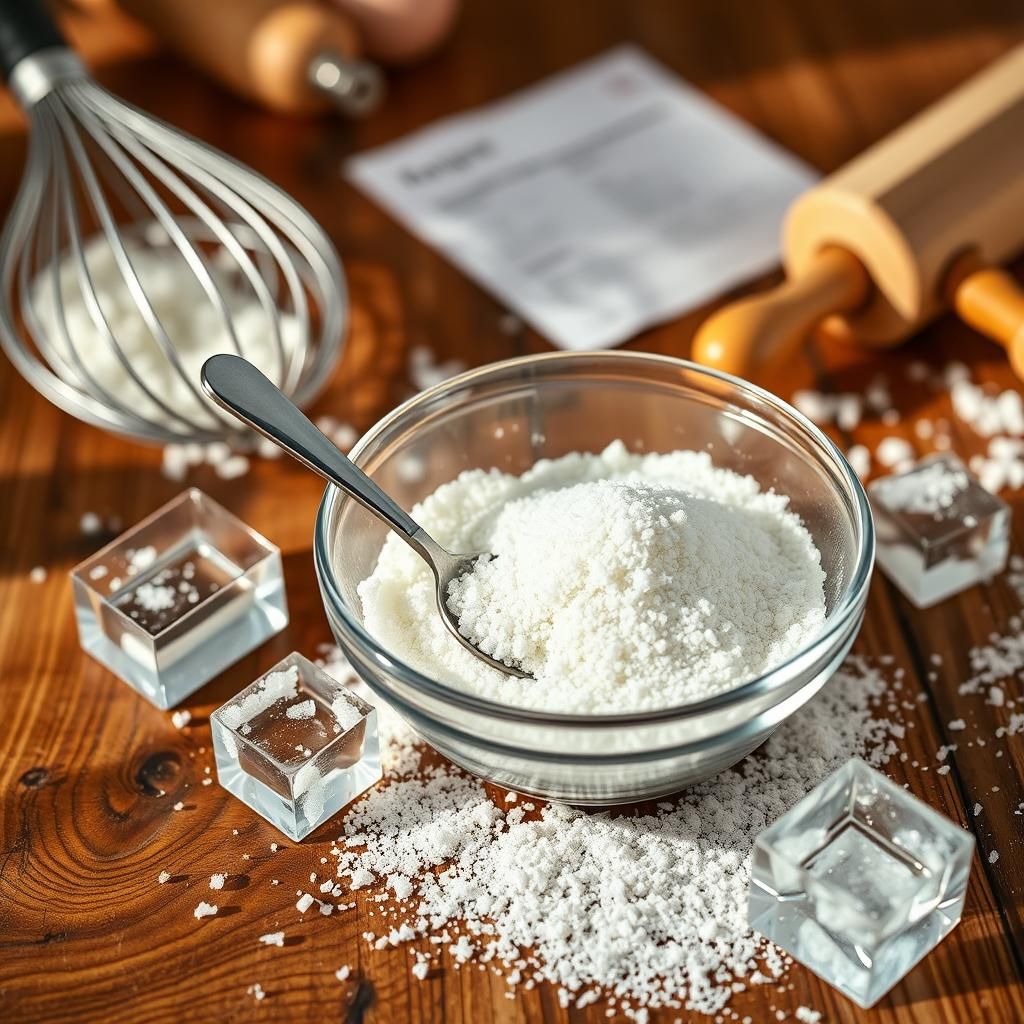
- Source: A sugar alcohol produced by fermenting glucose.
- Net Carbs: Typically zero. Some products might list a minimal amount (0-1g per serving).
- Glycemic Index: 0
- Taste Profile: About 60-80% as sweet as sugar, with a cooling sensation.
- Pros:
- Well-tolerated by most people.
- Doesn’t raise blood sugar.
- Most of it is excreted unchanged in urine, minimizing digestive issues.
- Heat stable.
- Cons:
- Can cause bloating or gas in some individuals, especially in large amounts.
- Less sweet than sugar, so more is needed.
- Can have a cooling aftertaste.
- Usage Tips: Use in moderation. Combine with other sweeteners like stevia or monk fruit for enhanced sweetness.
- E-E-A-T: Erythritol is widely used in the food industry as a safe sugar alternative, demonstrating experience. Scientific studies support its safety profile and minimal impact on blood sugar, establishing authoritativeness and trustworthiness. Its growing popularity reflects its recognized expertise as a keto-friendly sweetener.
3. Monk Fruit (Luo Han Guo)
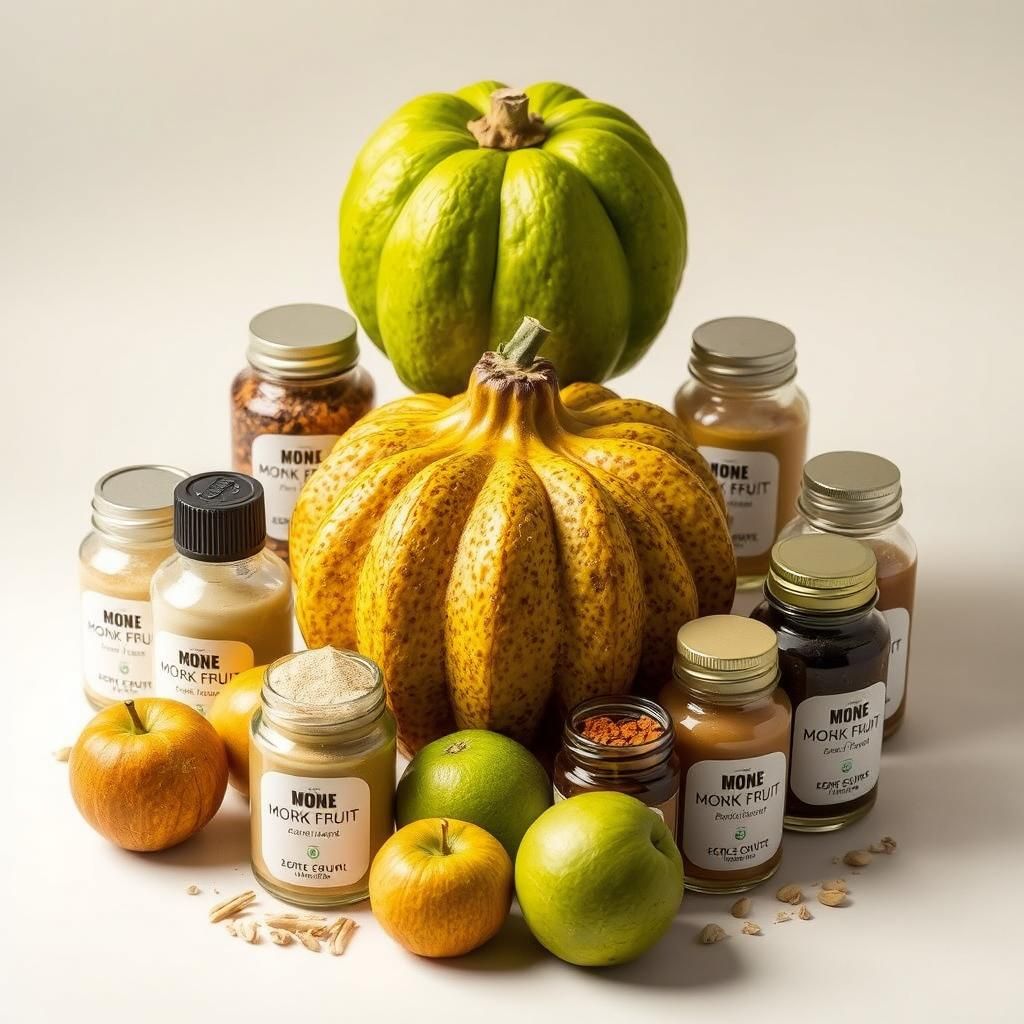
- Source: Extracted from the monk fruit, a small green gourd native to Southern China.
- Net Carbs: Zero
- Glycemic Index: 0
- Taste Profile: Intensely sweet, about 150-200 times sweeter than sugar.
- Pros:
- Naturally derived.
- Doesn’t raise blood sugar.
- Excellent for baking and beverages.
- Often blended with erythritol to reduce the intensity and improve the taste.
- Cons:
- Can be expensive.
- May have a slight fruity or molasses-like aftertaste for some.
- Some products are mixed with dextrose or other non-keto ingredients.
- Usage Tips: Start with a tiny amount. Look for pure monk fruit extract or blends with erythritol that are free from additives.
- E-E-A-T: Monk fruit has been used in traditional Chinese medicine for centuries, demonstrating experience. Research supports its antioxidant properties and lack of impact on blood sugar, establishing authoritativeness and trustworthiness. Its increasing prevalence in keto-friendly products showcases its recognized expertise as a natural sugar alternative.
4. Xylitol
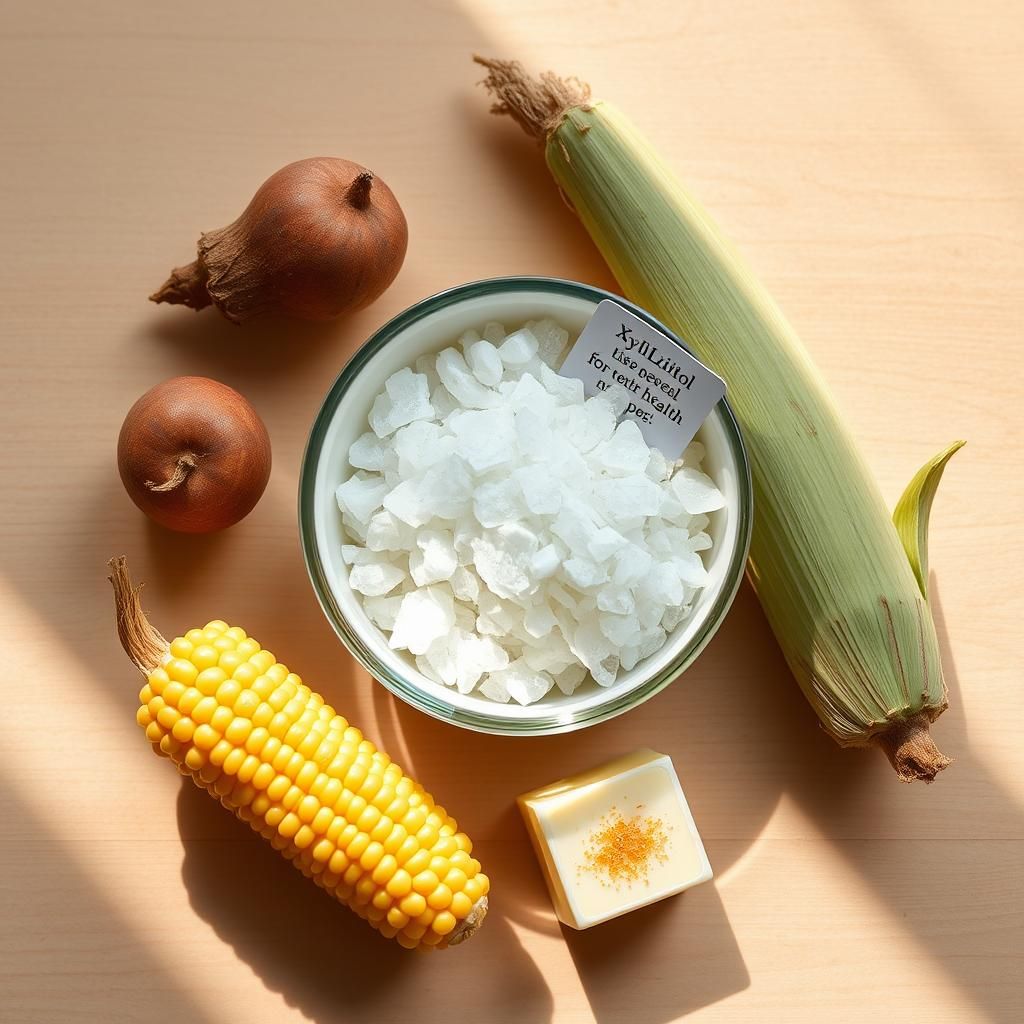
- Source: A sugar alcohol found in many fruits and vegetables, and commercially produced from corn cobs or birch trees.
- Net Carbs: While technically a sugar alcohol, it has about 1 gram of net carbs per teaspoon.
- Glycemic Index: 7-13 (low)
- Taste Profile: Very similar to sugar in taste and sweetness.
- Pros:
- Good for dental health (inhibits bacterial growth in the mouth).
- Can be used in baking and cooking.
- Doesn’t have a noticeable aftertaste for most.
- Cons:
- Extremely toxic to dogs. Even a small amount can be fatal.
- Can cause digestive upset (bloating, gas, diarrhea) in some people, especially in large quantities.
- Not completely carb-free, so needs to be used in moderation on keto.
- Usage Tips: If you have pets, avoid xylitol altogether. Start with a small amount to assess tolerance.
- E-E-A-T: Xylitol’s use in dental products showcases its recognized expertise in oral health, reflecting years of experience. While it has a low glycemic index, it’s not completely carb-free. Numerous studies back up its benefits for dental health, establishing authoritativeness and trustworthiness.
5. Allulose

- Source: A rare sugar found in small quantities in certain fruits and foods like figs, raisins, and maple syrup.
- Net Carbs: Considered to have virtually zero net carbs because it is not metabolized by the body.
- Glycemic Index: 0
- Taste Profile: About 70% as sweet as sugar, with a clean, sugar-like taste.
- Pros:
- Doesn’t raise blood sugar or insulin levels.
- Well-tolerated by most people.
- Can caramelize, making it suitable for certain baking applications.
- May have potential health benefits, such as improving insulin sensitivity.
- Cons:
- More expensive than some other keto sweeteners.
- Not as widely available.
- Can cause bloating or gas in some individuals if consumed in large amounts.
- Usage Tips: Use it as a 1:1 replacement for sugar in many recipes.
- E-E-A-T: Allulose is a relatively newer sweetener, but ongoing research supports its safety and minimal impact on blood sugar, establishing authoritativeness and trustworthiness. Its unique properties, like caramelization, showcase its potential expertise in replacing sugar in various culinary applications.
6. Yacon Syrup

- Source: Extracted from the yacon plant, a tuber native to the Andes.
- Net Carbs: Contains about 4 grams of net carbs per tablespoon, mostly from fructooligosaccharides (FOS).
- Glycemic Index: Low (estimated to be around 1)
- Taste Profile: Sweet with a molasses-like flavor.
- Pros:
- Contains prebiotics (FOS), which can promote gut health.
- Lower glycemic index compared to sugar.
- Cons:
- Not completely carb-free, so must be used sparingly on keto.
- Can cause digestive upset (gas, bloating, diarrhea) in some people, especially in large quantities.
- High heat can break down the FOS, reducing its prebiotic benefits.
- Usage Tips: Use in very small amounts as a flavoring agent. It’s best suited for drizzling over desserts or adding to beverages.
- E-E-A-T: Yacon syrup’s use as a traditional food in the Andes demonstrates experience. Research supports its prebiotic effects, but its carbohydrate content requires careful consideration for keto diets, establishing authoritativeness and trustworthiness.
Sweeteners to Avoid on Keto

These sweeteners are not keto-friendly due to their high carbohydrate content and impact on blood sugar:
- Sugar (sucrose): The enemy of keto.
- High-Fructose Corn Syrup (HFCS): Causes rapid blood sugar spikes.
- Honey: High in sugar and carbohydrates.
- Maple Syrup: Similar to honey, high in sugar.
- Agave Nectar: Very high in fructose.
- Maltitol: A sugar alcohol that is significantly absorbed and can raise blood sugar.
- Dextrose: A simple sugar.
- Maltodextrin: A polysaccharide that is quickly absorbed as glucose.
- Aspartame and Sucralose (Splenda): While technically low-carb, some studies suggest they can impact gut health and cravings, and some individuals report stalls when consuming them. Although allowed by some, many in the keto community prefer to avoid them.
The Importance of Reading Labels
Always scrutinize the nutrition labels of sweeteners. Pay attention to:
- Total Carbohydrates: The total amount of carbohydrates per serving.
- Fiber: Subtract fiber from total carbohydrates to get net carbs.
- Sugar Alcohols: Subtract sugar alcohols (like erythritol and xylitol) from total carbohydrates to get net carbs. Note: Some sugar alcohols, like maltitol, are partially digested and should be counted as carbs.
- Ingredients: Check for hidden sugars or non-keto ingredients.
Tips for Baking with Keto Sweeteners

Baking with keto sweeteners can require some adjustments. Here are some tips:
- Use Blends: Combine different sweeteners for a more balanced flavor profile. For example, erythritol and stevia often work well together.
- Adjust Liquid: Some sweeteners can affect the moisture content of baked goods. You may need to adjust the amount of liquid in your recipe.
- Consider Texture: Sugar contributes to the texture of baked goods. You may need to add other ingredients, like almond flour or coconut flour, to achieve the desired texture.
- Browning: Some keto sweeteners don’t brown like sugar. You can add a touch of molasses (if you can afford the carbs) or use a kitchen torch to brown the tops of baked goods. Allulose is an exception and will brown nicely.
Addressing Common Concerns
- Digestive Issues: Start with small amounts of any new sweetener to assess your tolerance.
- Aftertaste: Experiment with different brands and blends to find sweeteners that you enjoy.
- Blood Sugar Impact: Monitor your blood sugar levels after consuming different sweeteners to see how they affect you personally.
Enhancing Flavor Beyond Sweeteners
Don’t rely solely on sweeteners to satisfy your sweet cravings. Explore other flavor enhancers like:
- Vanilla Extract: Adds a rich, warm flavor.
- Cinnamon: A naturally sweet and warming spice.
- Unsweetened Cocoa Powder: For chocolatey goodness.
- Nut Extracts (Almond, Hazelnut): Provide a subtle sweetness and nutty flavor.
- Berries (in moderation): Blueberries, raspberries, and strawberries are relatively low in carbs and can add sweetness and antioxidants.
Expert Insights and Research
Many registered dietitians and nutritionists recommend stevia, erythritol, and monk fruit as safe and effective keto sweeteners. Numerous studies have confirmed their minimal impact on blood sugar and insulin levels. However, individual responses can vary, so it’s essential to listen to your body and monitor your own blood sugar levels.
Example Study: A study published in the “Journal of the American College of Nutrition” found that erythritol did not significantly affect blood glucose or insulin levels in healthy individuals.
Keto Sweetener Recipes
Keto Chocolate Chip Cookies:
- 1 ½ cups almond flour
- ½ teaspoon baking soda
- ¼ teaspoon salt
- ½ cup unsalted butter, softened
- ½ cup erythritol
- ¼ cup stevia
- 1 large egg
- 1 teaspoon vanilla extract
- ½ cup sugar-free chocolate chips
Instructions:
- Preheat oven to 350°F (175°C).
- In a bowl, whisk together almond flour, baking soda, and salt.
- In a separate bowl, cream together butter and sweeteners until light and fluffy.
- Beat in egg and vanilla extract.
- Gradually add the dry ingredients to the wet ingredients, mixing until just combined.
- Stir in chocolate chips.
- Drop by rounded tablespoons onto a baking sheet.
- Bake for 10-12 minutes, or until golden brown.
Keto Vanilla Ice Cream:
- 2 cups heavy cream
- 1 cup unsweetened almond milk
- ½ cup erythritol
- 1 tablespoon vanilla extract
- Pinch of salt
Instructions:
- Combine all ingredients in a bowl and whisk until well combined.
- Pour the mixture into an ice cream maker and churn according to the manufacturer’s instructions.
- Transfer the ice cream to a freezer-safe container and freeze for at least 2 hours before serving.

Sweet Endings and Keto-Friendly Choices
Choosing the right sweetener can make or break your keto journey. Stevia, erythritol, monk fruit, and allulose are excellent options that allow you to enjoy sweet treats without derailing your progress. Remember to read labels carefully, experiment with different sweeteners, and listen to your body. With a little knowledge and creativity, you can successfully navigate the world of keto-friendly sweeteners and satisfy your sweet tooth while staying in ketosis.
Check Out This
Unlock Your Keto Success: The Ultimate Meal Plan
Craft Your Perfect Keto Diet: Personalized Plans Inside!
Affiliate Link Disclosure: Some of the links in this post are affiliate links. This means that if you click on the link and make a purchase, I may receive a small commission at no extra cost to you. I only recommend products or services that I personally use and believe will be valuable to my readers.



